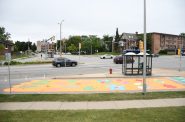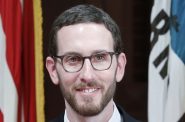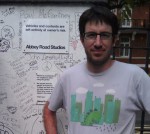Why Has the Walkable City Been Villainized?
All the city news you can use.

16th Street Mall in Denver, CO. Photo by User: Stilfehler at wikivoyage shared, (CC BY-SA 1.0), via Wikimedia Commons
Every day at The Overhead Wire we sort through over 1,500 news items about cities and share the best ones with our email list. At the end of the week, we take some of the most popular stories and share them with Urban Milwaukee readers. They are national (or international) links, sometimes entertaining and sometimes absurd, but hopefully useful.
Distrust in the city on trees: Low Income communities in cities around the county are less likely to have urban tree canopy that can cool their neighborhoods. But many of the folks that live in these communities also don’t want new trees either because of distrust of cities or programs that haven’t delivered in the past. These communities are often left out of decisions about where to plant trees and have seen tree neglect up front over the years. (Jingnan Peng | Christian Science Monitor)
Boston commuter lines rebound: Commuter rail lines of the MBTA are now at close to full pre-pandemic ridership. One of the changes the agency has made since before the pandemic is running more mid-day train service which means all the trains aren’t tied up in peak hour rush. They are also adding later night and weekend service for people going out for entertainment or sporting events as well which have been popular with riders. (Dan Vock | Route Fifty)
The High Line effect: In the 2000s an abandoned elevated rail line in New York City was transformed into a linear park that drew new development and praise from around the world in addition to and criticism about gentrification. But cities around the country saw the result as an opportunity to develop their own projects and several related efforts have sprung up in places like Miami, Houston, Philadelphia, and Washington DC. (Ankitha Gattupalli | ArchDaily)
Colorado’s new approach to highways: In 2022 the head of Colorado’s Department of Transportation called off the expansion of I-25 through the center of Denver. The change in policy was the result of a 2019 law that required the state to reduce emissions 90% in 30 years signed by Jared Polis, the state’s climate focused governor. Now the state’s largest MPOs and transportation agencies must demonstrate how projects will reduce transportation emissions or lose funding. (Megan Kimble | New York Times)
The strange villainization of the walkable city: French scholar Carlos Moreno started sketching the idea for the 15 Minute City in the 2010s after coming to the understanding the tech focused approaches would not create more sustainable cities. But the idea of having everything you need within a short walk of your home got twisted during the pandemic as tin foil hat conspiracy theorists took hold of the ideas and used them to scare up opposition to urban policy. (Michael Friedrich | The New Republic)
Quote of the Week
It is nonsense budget politics. Hochul says that she has delayed congestion pricing because she is worried about the city’s recovery from the pandemic, but regardless of her reasons, she has now left a $1 billion hole in the transit authority’s budget. The New York Times reports that she wants to fill that hole by raising taxes on the state’s businesses. But that means that she has taken a tax formerly charged to some New York residents and businesses — but which would also fall on New Jersey and Connecticut residents and businesses — and shifted it entirely to in-state entities.
–Robinson Meyer in HeatMap describing the political and fiscal idiocy NY Governor Hochul’s congestion pricing betrayal.
This week on the Talking Headways podcast, we’re joined by Cleveland journalist Ken Prendergast to talk about the competing interests of Brightline and Amtrak and the history of passenger rail planning in the region.
Want more links to read? Visit The Overhead Wire and signup.
Urban Reads
-
Congestion Pricing Cuts Air Pollution in New York City
 Dec 14th, 2025 by Jeff Wood
Dec 14th, 2025 by Jeff Wood
-
We Think We Love to Drive. But Do We Really?
 Dec 7th, 2025 by Jeff Wood
Dec 7th, 2025 by Jeff Wood
-
Can Scott Wiener Tackle America’s Housing Crisis?
 Nov 23rd, 2025 by Jeff Wood
Nov 23rd, 2025 by Jeff Wood


















